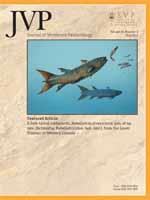Metaxytherium subapenninum was a halitheriine dugongid distributed along the northwestern coasts of the Mediterranean Basin during the early and late Pliocene. It represents the latest sirenian species of the Mediterranean Basin, the latest Metaxytherium species in the world, and also the latest species belonging to the paraphyletic subfamily Halitheriinae. We review M. subapenninum in the light of new discoveries, including its stratigraphic and geographic distribution, osteology, paleoecology, and relationships. M. subapenninum represents a more derived stage of evolution in comparison with the earlier Metaxytherium species. It is characterized in particular by an increase in body size, an increase in tusk size, and a dorsal broadening of the nasal process of the premaxilla. Its variation in tusk size does not appear to represent sexual dimorphism as in the modern Dugong, but instead progressive intraspecific evolution of larger tusks as a feeding adaptation convergent on that of derived dugongines. It was a relict species limited to the Mediterranean Basin, and responded to long-term climatic cooling by an increase in body size and by an increase in tusk size and rostral reinforcement in order to obtain a more nutritious diet richer in rhizomes.
How to translate text using browser tools
1 May 2012
Metaxytherium subapenninum (Bruno, 1839) (Mammalia, Dugongidae), the Latest Sirenian of the Mediterranean Basin
Silvia Sorbi,
Daryl P. Domning,
Stefano Claudio Vaiani,
Giovanni Bianucci
ACCESS THE FULL ARTICLE

Journal of Vertebrate Paleontology
Vol. 32 • No. 3
May 2012
Vol. 32 • No. 3
May 2012




